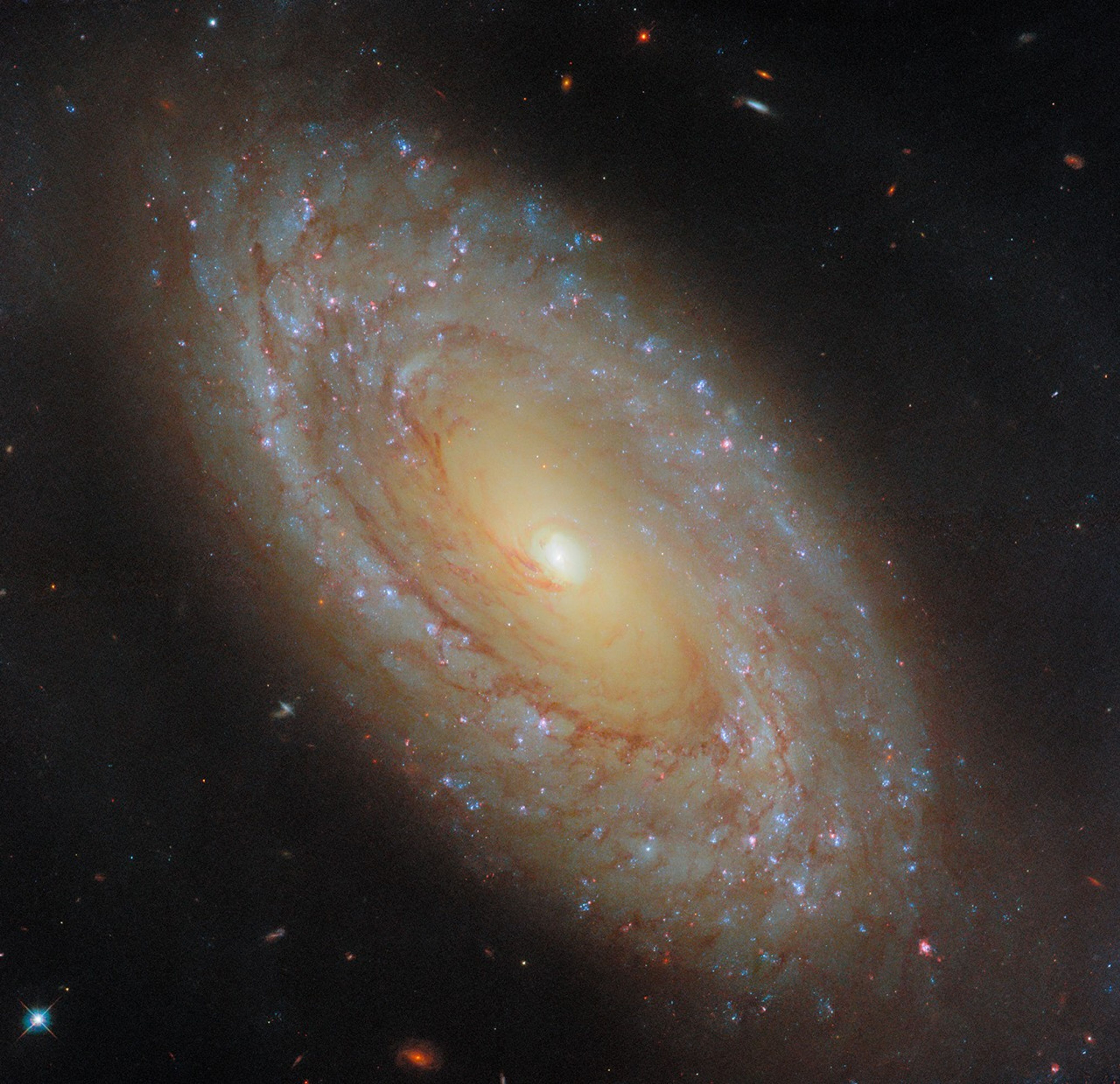2 min read
Hubble Studies a Nearby Galaxy’s Star Formation This NASA/ESA Hubble Space Telescope image features the picturesque spiral galaxy NGC 4941. ESA/Hubble & NASA, D. ThilkerThis NASA/ESA Hubble Space Telescope image features the picturesque spiral galaxy NGC 4941, which lies about 67 million light-years from Earth in the constellation Virgo (The Maiden). Because this galaxy is nearby, cosmically speaking, Hubble’s keen instruments are able to pick out exquisite details such as individual star clusters and filamentary clouds of gas and dust.
The data used to construct this image were collected as part of an observing program that investigates the star formation and stellar feedback cycle in nearby galaxies. As stars form in dense, cold clumps of gas, they begin to influence their surroundings. Stars heat and stir up the gas clouds in which they form through winds, starlight, and — eventually, for massive stars — by exploding as supernovae. These processes are collectively called stellar feedback, and they influence the rate at which a galaxy can form new stars.
As it turns out, stars aren’t the only entities providing feedback in NGC 4941. At the heart of this galaxy lies an active galactic nucleus: a supermassive black hole feasting on gas. As the black hole amasses gas from its surroundings, the gas swirls into a superheated disk that glows brightly at wavelengths across the electromagnetic spectrum. Similar to stars — but on a much, much larger scale — active galactic nuclei shape their surroundings through winds, radiation, and powerful jets, altering not only star formation but also the evolution of the galaxy as a whole.
Facebook logo @NASAHubble @NASAHubble Instagram logo @NASAHubbleMedia Contact:
Claire Andreoli ([email protected])NASA’s Goddard Space Flight Center, Greenbelt, MD
Share
Details
Last Updated Apr 04, 2025 Editor Andrea Gianopoulos Location NASA Goddard Space Flight CenterRelated Terms
Hubble Space Telescope Astrophysics Astrophysics Division Galaxies Goddard Space Flight Center Spiral Galaxies The Universe Keep ExploringDiscover More Topics From Hubble
Hubble Space Telescope
Since its 1990 launch, the Hubble Space Telescope has changed our fundamental understanding of the universe.
Hubble’s Night Sky Challenge
Hubble’s Galaxies
35 Years of Hubble Images
Read More Details
Finally We wish PressBee provided you with enough information of ( Hubble Studies a Nearby Galaxy’s Star Formation )
Also on site :
- Jessica Hecht Reveals the Hardest Part of Being a Tony Nominee (Exclusive)
- '90s Bombshell, 53, Makes Bold Statement About 'Natural Aging'
- Julia Fox's Net Worth in 2025 Proves She's an It Girl

